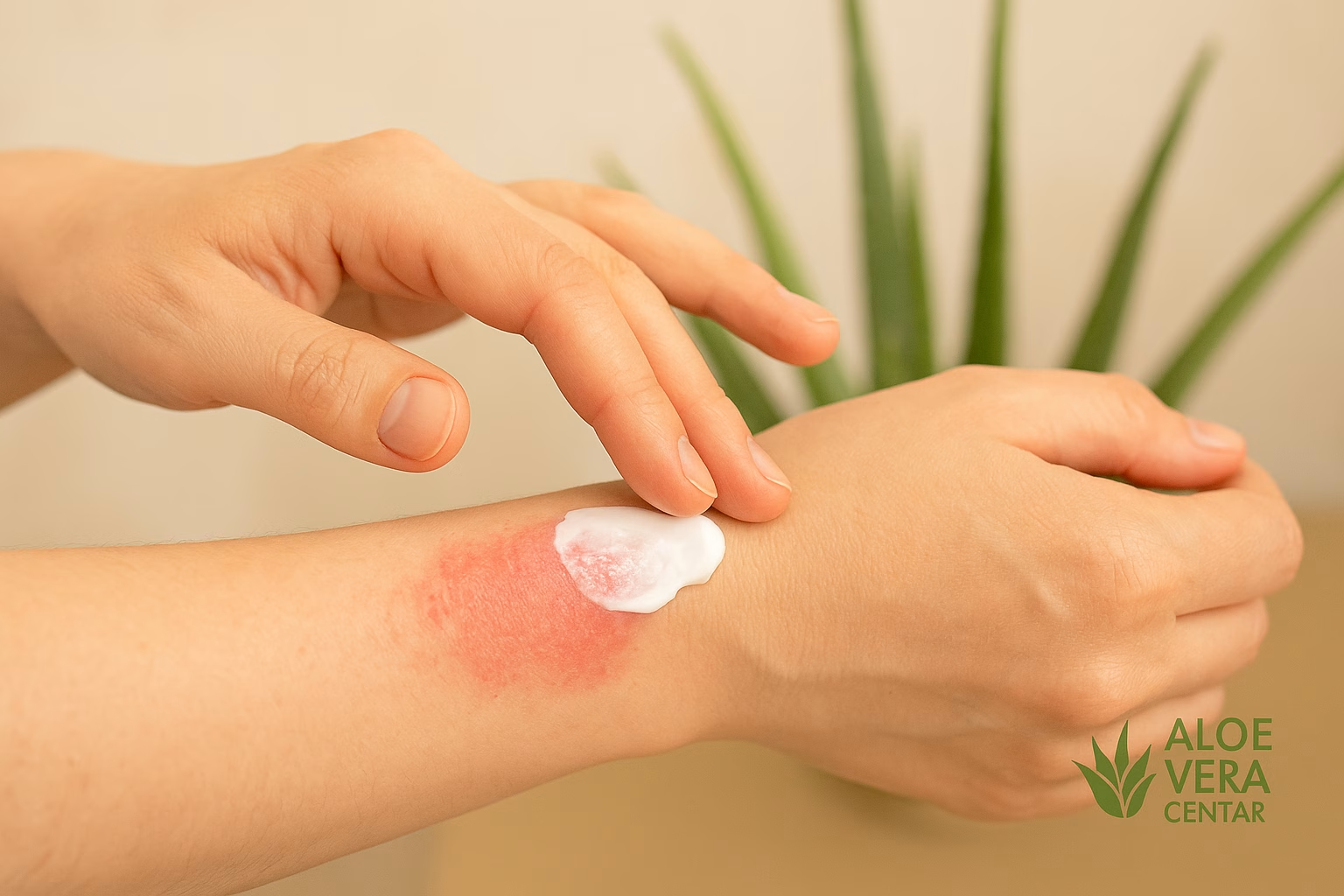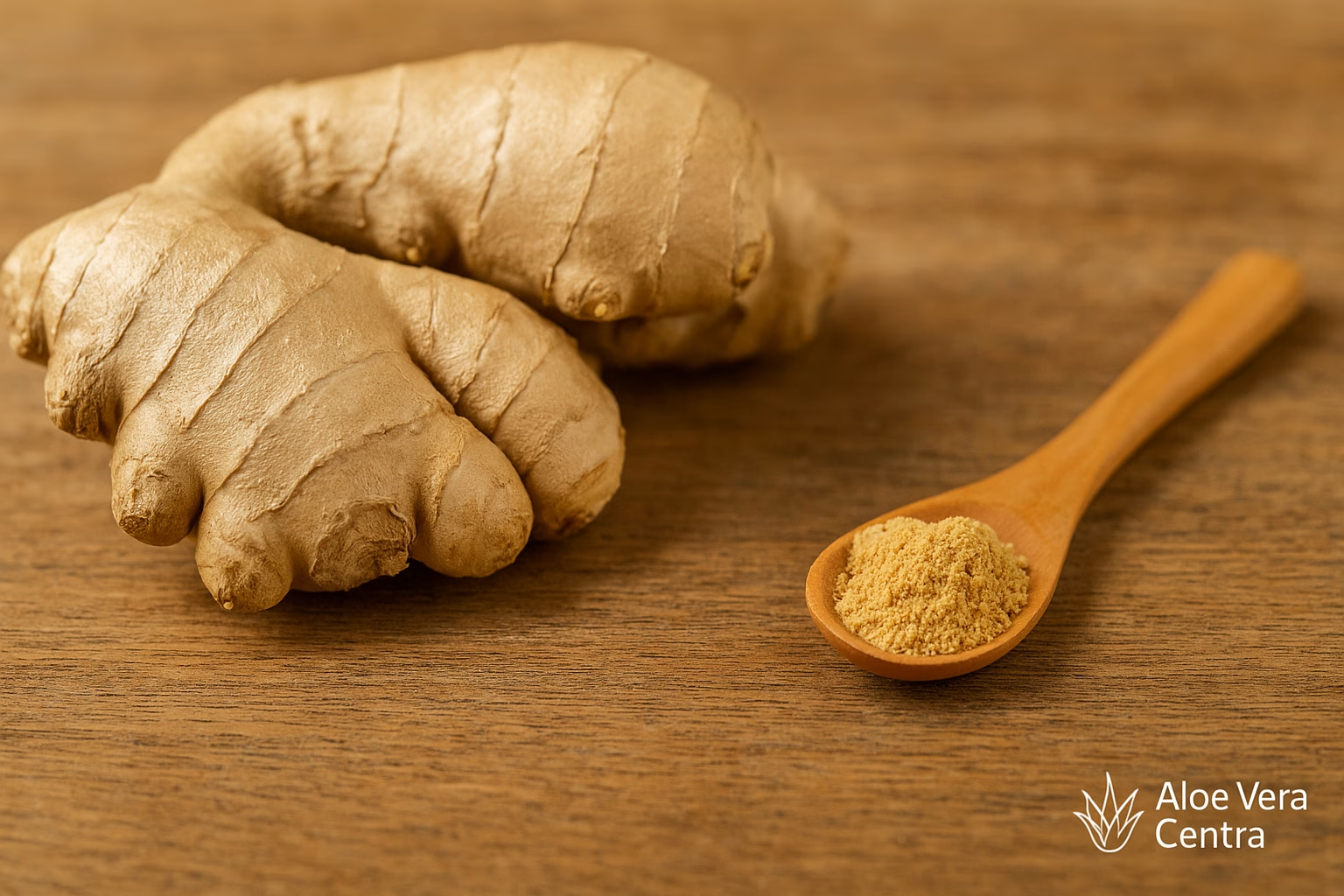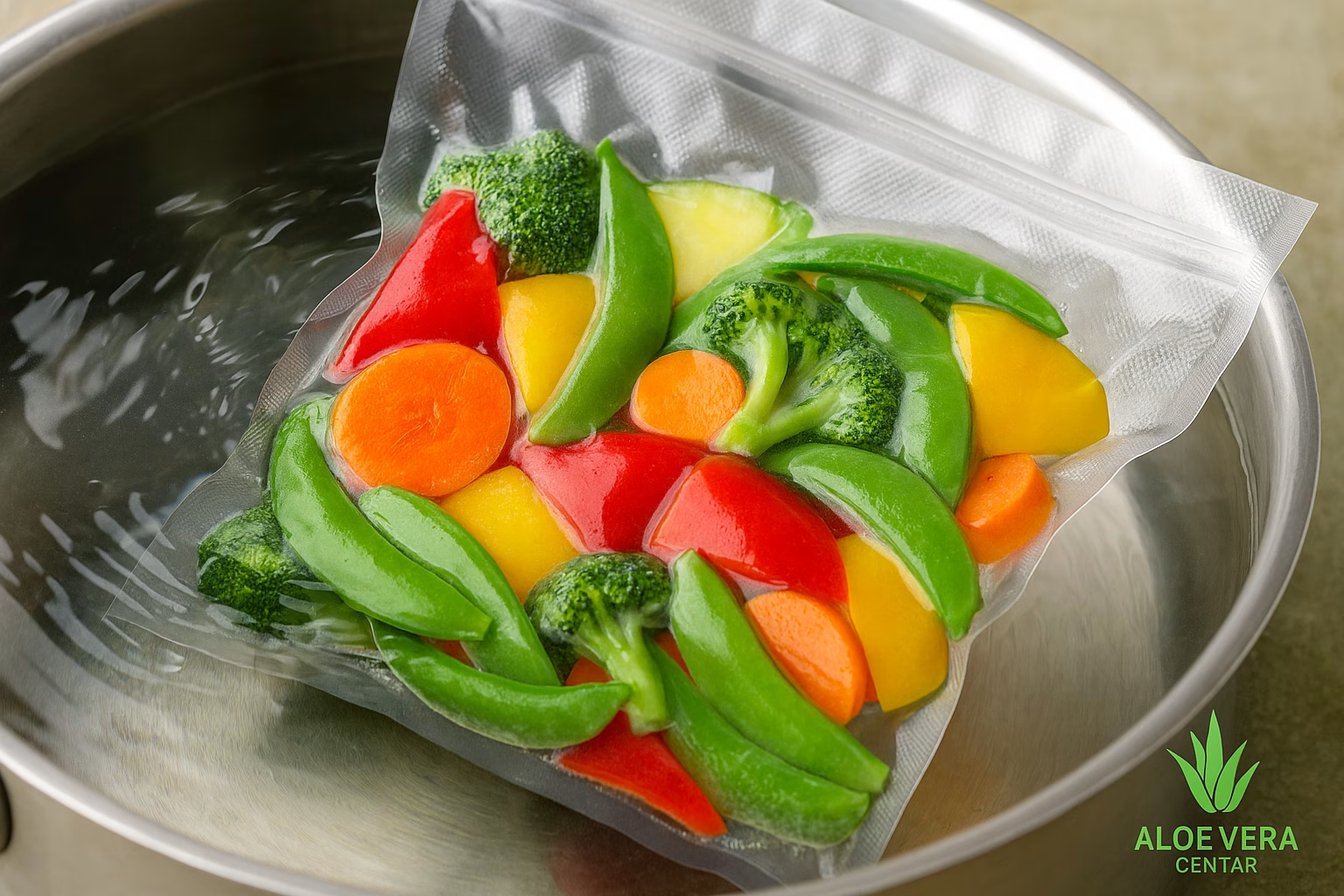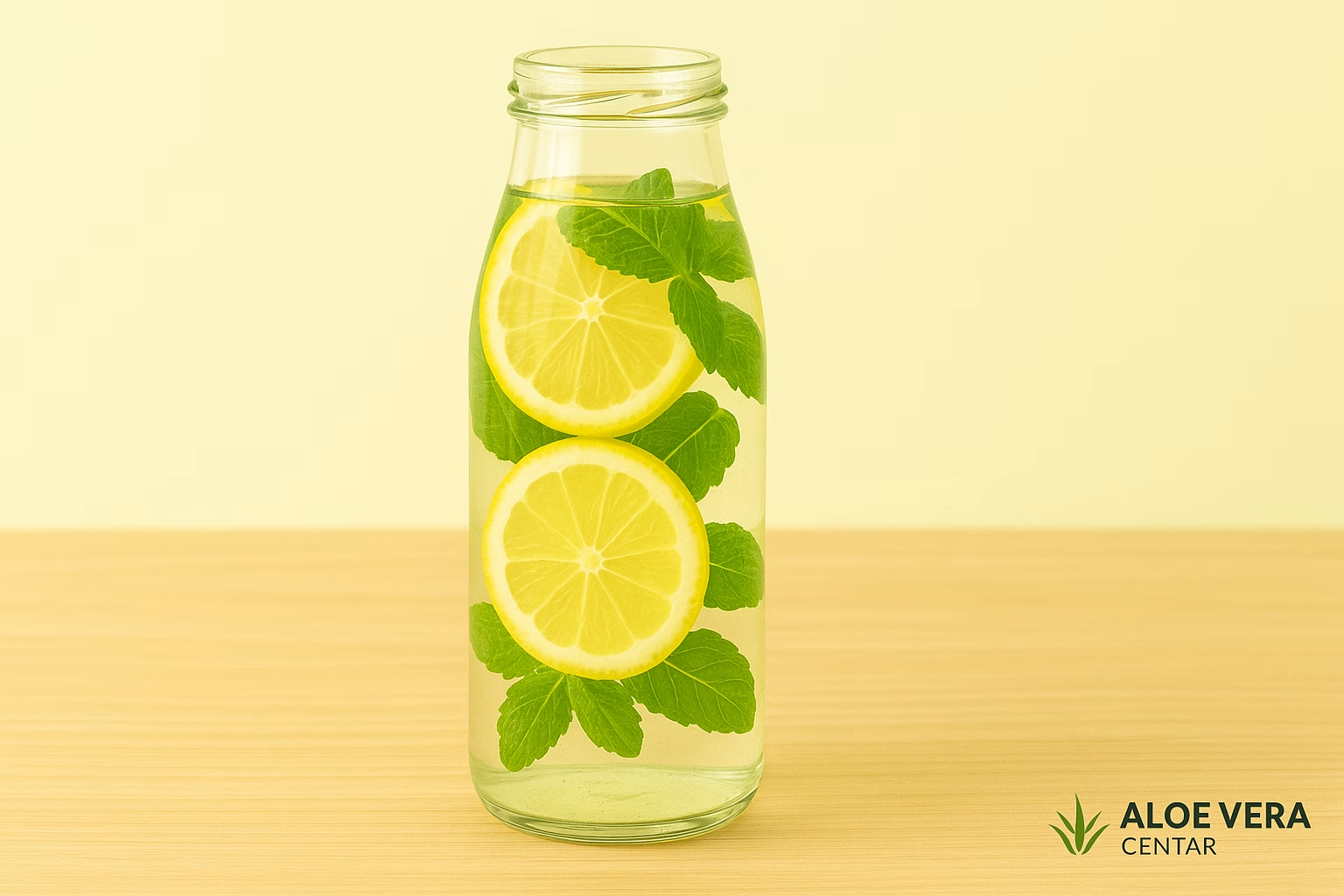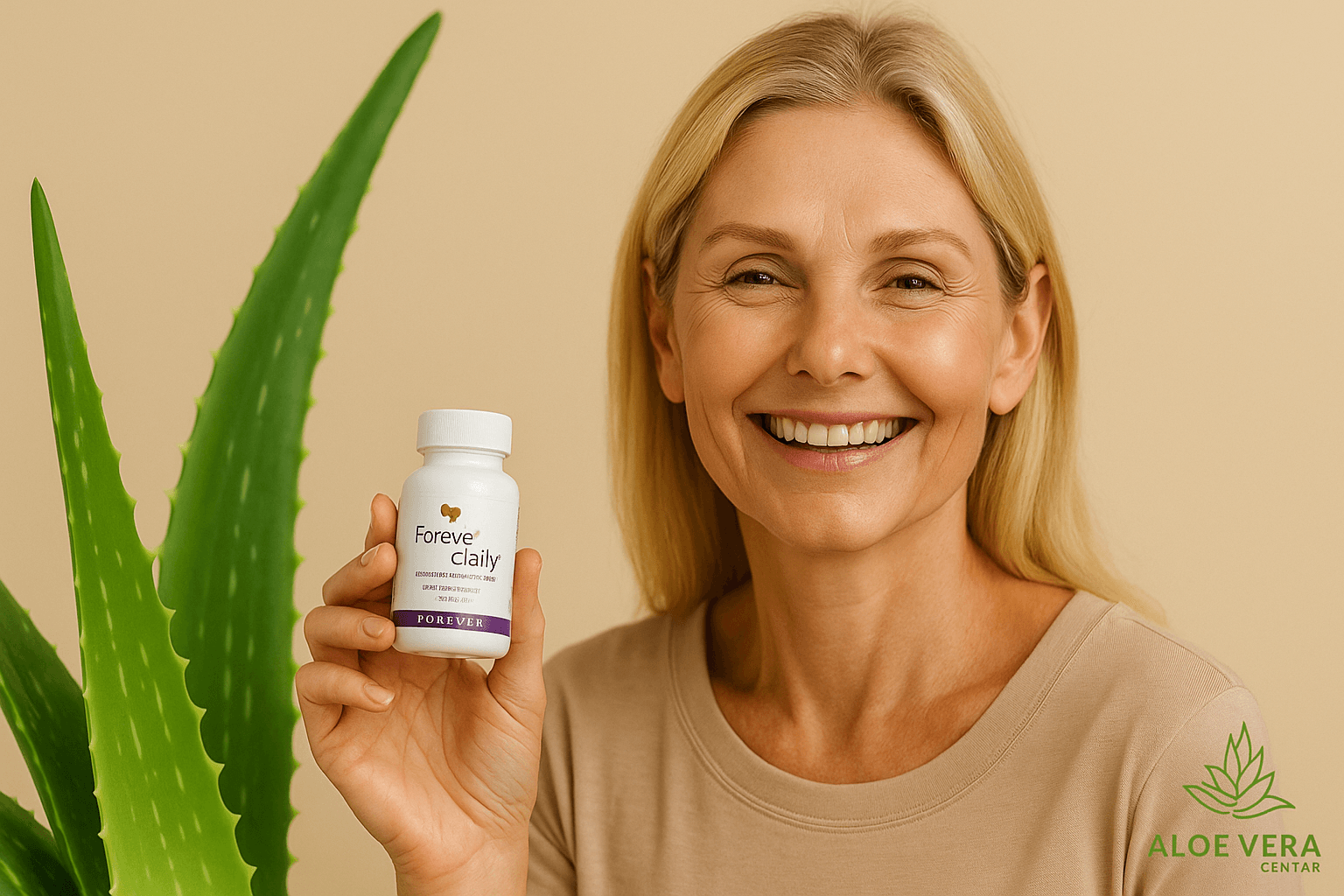
Natural teeth whitening: Aloe vera and baking soda for a bright smile
Tips for naturally whitening teeth: aloe vera and baking soda
Do you want to get rid of the yellowish tint of your teeth, while avoiding aggressive chemical treatments and expensive dental procedures? The good news is that **natural teeth whitening** can be very effective – especially if you try the combination of aloe vera and baking soda. In this article, you will learn why these ingredients are becoming increasingly popular in home dental care and how to use them safely and correctly for visible results.
Although there is no “magic formula” that will instantly erase all stains and discoloration, certain foods and supplements—like baking soda and aloe vera—can slowly but surely brighten your teeth and give them a healthier glow. Read below about the mechanisms of action, possible limitations and tips for fitting these methods into daily oral hygiene.
Why do teeth change color?
Before you embark on **natural teeth whitening**, it’s important to understand why yellowing or brownish stains occur in the first place. The most common reasons include:
- Food and drinks: Coffee, black tea, red wine, carbonated juices and colored foods often leave marks on tooth enamel.
- Smoking: Nicotine and tar from cigarettes create stubborn stains on the surface of teeth.
- Lack of proper oral hygiene: Plaque and deposits build up if not brushed and cleaned regularly.
- Natural aging: Enamel thins, and dentin (the yellowish layer beneath the enamel) becomes more visible.
- Genetics and certain medications: In some people, a yellowish tint to their teeth is congenital, and certain antibiotics or medications can accelerate discoloration.
Whether it’s superficial stains or deeper discoloration, gentle methods like aloe vera and baking soda can help polish teeth and remove plaque. However, you should always be mindful of the safety and health of your enamel.
Aloe vera for oral hygiene: why and how?
Chemical composition and benefits
Aloe vera has long been known for its healing properties – from soothing skin burns to fighting certain bacteria and fungi. The reason lies in the plant’s rich composition, which contains amino acids, enzymes, vitamins (A, C, E and B12), minerals and anti-inflammatory substances.
When it comes to **natural teeth whitening**, aloe vera can contribute to:
- Preventing the accumulation of plaque and bacteria on the surface of the teeth.
- A soothing effect on the gums, which is important for more common dental problems (eg gingivitis).
- Mild abrasive effect if used in combination with other toothpaste or tooth powder.
How to use aloe vera in oral hygiene?
An easy way to incorporate aloe vera into your daily routine is to **replace some of your regular paste with aloe vera gel** or look for products that already have aloe extract in their formula. If you opt for pure aloe vera gel (e.g. Forever Aloe Vera Gel for oral use or another proven product), follow these steps:
- Apply a pea-sized amount of gel to your toothbrush.
- If desired, combine with a paste or powder based on baking soda (more on that below).
- Brush your teeth for 2–3 minutes as usual, making sure to thoroughly cover all surfaces.
- Rinse your mouth with lukewarm water.
You can also make a **homemade mouthwash** by diluting a small amount of aloe vera gel with water and a few drops of peppermint essential oil (optional for flavor). You can use this liquid after brushing your teeth to remove extra plaque and disinfect your mouth.
Baking soda: powerful, but requires caution
Why is it used in teeth whitening?
**Baking soda** (sodium bicarbonate) has long been one of the most popular “homemade” ingredients for making toothpaste. The reason is its **mild abrasiveness**, which helps remove surface deposits and stains. Additionally, baking soda can neutralize acids in the mouth, which is beneficial for preventing cavities.
However, if used excessively or too aggressively, baking soda can damage enamel. That’s why it’s important to be moderate and not use this method too often.
Effective ways to use baking soda
- To make homemade toothpaste: Mix 1 teaspoon of baking soda with a few drops of water or aloe vera gel to make a thick paste. Then apply it to your toothbrush and gently brush your teeth for about 1 minute.
- Adding to regular toothpaste: For less abrasiveness, you can sprinkle a few grains of baking soda onto your regular toothpaste a few times a month.
- A quick fix for special occasions: If you want a quick fix before an important event, mix baking soda with a little lemon juice, brush briefly, and rinse immediately with water. However, you shouldn’t repeat this method too often, as the acid in the lemon is extra aggressive on the enamel.
It is important to note that **too frequent use of baking soda** (e.g. daily) can wear away the protective layer of your teeth. Therefore, it is recommended to use this paste no more than **1–2 times a week** or as advised by your dentist.
Aloe vera + baking soda: a combination for natural whitening
If you want to try **natural teeth whitening** in the truest sense, you can combine the benefits of aloe vera (soothing and antimicrobial properties) with the ability of baking soda to gently polish teeth. Here’s a simple recipe:
- Mix 1 teaspoon of baking soda with 1 teaspoon of pure aloe vera gel.
- Add a few drops of water if necessary to get a paste of the desired thickness.
- Optionally, add 1 drop of mint essential oil for freshness and flavor (be careful with essential oils, be sure to check that they are safe for oral use).
- Gently brush your teeth for 1 minute, taking care to avoid applying too much pressure.
- Rinse your mouth thoroughly with lukewarm water and continue with your usual routine (flossing, rinsing).
It is not recommended to use this combination toothpaste more than 1–2 times a week to avoid overdoing the abrasive effect. Thanks to aloe vera, there is less chance of irritation, and after a while your teeth will look healthier and slightly brighter.
Forever Living oral care products
If you’re looking for a more convenient way to enjoy the benefits of aloe vera, consider pre-made formulas that already contain pure aloe vera gel. ** Forever Living ** is known for its wide range of aloe-based products, including **Forever Bright Toothgel** – a toothpaste formulated with aloe vera and bee propolis, with no added fluoride. This toothpaste:
- It has **mild abrasiveness** suitable for everyday use.
- Helps maintain healthy gums and fresh breath.
- It does not contain fluoride, which is a good option for those who avoid it.
Additionally, you may also consider **Forever Bee Honey** as a natural replacement for refined sugars (which are harmful to teeth), and **Aloe Vera Gel** drink for general body support from the inside, including the immune system and the mucous membranes of the oral cavity.
For all aloe vera lovers or those who just want to learn about its benefits, you can find **special offers** and exclusive discounts on the official website . Additional information and advice about aloe vera are available at aloevera-centar.com , where you will find expert articles and user experiences.
Safety guidelines: how to whiten teeth naturally?
**Natural teeth whitening** can be a good step towards achieving a brighter smile, but keep the following in mind:
- Regular dental visits: Before you start any home treatments, consult with a professional. They can assess the health of your teeth and gums and recommend the best approach.
- Limit brushing time: Whether you use baking soda or aloe vera, don’t overdo it with length or frequency. Brushing too long or too quickly can damage your enamel and gums.
- Watch out for sensitivity: If you notice increased sensitivity to cold/hot or bleeding gums, stop treatments and contact your dentist.
- Consistent oral hygiene: Even the best “whitener” will not have a long-lasting effect if you do not stick to regular brushing (at least 2 times a day), flossing, and checking for tartar.
Additional tips for maintaining white teeth
1. Reduce your intake of dark beverages
Coffee, black tea, red wine and intensely colored carbonated drinks are among the main culprits of tooth stains. Try to limit their consumption or rinse your mouth with water after drinking them, to prevent the deposition of pigments.
2. Limit smoking
Tobacco contains nicotine and tar, which deposit on teeth and cause stubborn stains that are very difficult to remove. By quitting or reducing smoking, you will not only preserve the color of your teeth, but also your overall health.
3. Watch out for acidic foods
Citrus fruits, vinegar, and other acidic foods can soften enamel, making teeth more susceptible to abrasion. While they are healthy, consume them in moderation and don’t brush your teeth immediately after eating something acidic – wait at least 30 minutes for the enamel to stabilize.
4. Descale regularly
Tartar not only disfigures the appearance of your teeth, but can also lead to gum disease and other complications. Remove it regularly with professional cleanings by your dentist or dental hygienist.
FAQ (Frequently Asked Questions)
1. How quickly can I expect results with aloe vera and baking soda?
Natural teeth whitening requires patience – it often takes several weeks to a month of regular (but not too frequent) treatments to see visible lightening. Results also depend on the natural color of your teeth, dietary habits, and genetic factors.
2. Is the combination of aloe vera and baking soda safe for children?
In general, baking soda can be too abrasive for children’s teeth, and children often don’t know how to rinse their mouths well. If you want to use natural methods with children, consult a pediatrician or pediatric dentist and choose milder, children’s products.
3. Can enamel be “whitened” too much using these methods?
Natural methods like aloe vera and baking soda generally won’t over-whiten your enamel, as the effects are gradual and mild. The biggest risk is using baking soda too often, which can damage the enamel surface. That’s why it’s important to follow the recommended frequency (1–2 times a week).
4. Can I use other household whitening ingredients?
Some people experiment with activated charcoal, coconut oil, lemon, and turmeric, but be careful of abrasiveness and acidity. Check reliable sources and listen to your dentist’s advice to maintain healthy, intact teeth.
Conclusion
**Natural teeth whitening** with aloe vera and baking soda is an attractive option for anyone looking for gentle, at-home methods to improve their smile. Thanks to the anti-inflammatory properties of aloe vera and the polishing effects of baking soda, these two ingredients can help remove surface stains, freshen breath, and have a beneficial effect on your gums. However, moderation and the right approach are key.
By including quality aloe vera products, such as Forever Bright Toothgel , or choosing pure Aloe Vera Gel in your oral hygiene routine, you will ensure optimal results without unnecessary risk to your teeth. For additional tips and the possibility of purchasing at a discount, check out the official website , and for complete information about aloe vera and its benefits, visit aloevera-centar.com .
Enjoy brushing and a bright smile!
This content is not a substitute for professional medical advice. Before introducing new methods or products to your dental hygiene, consult your dentist, especially if you have sensitive teeth or existing dental problems.

